Bill and friend. I like her hair
Defying convention and coming out with flying colors. Walter Pall repotted this maple during the heat of mid-summer and it didn't even blink
So why are we talking about mid-summer when it’s freezing outside? Well, really there’s no good reason except today I’m flying and driving from the Rockies home to Vermont, so we’ll keep it short and simple. Besides I like the tree, and though I’m not surprised, I also like that it didn’t blink. Here’s you link to Walter’s fb post
As long as we're on Walter and Japanese maples, here one of my favorites from a post we did back in October, 2016. It's also about repotting, so you might want to take a look

No Caption with this one, but it looks a lot like three Shimpaku junipers on a precariously balanced stone. I wonder what that little orange spot is
Back to Bill Valavanis’ Japan journey. Today we’ll show you some of his photos from 2018 38th Nippon Bonsai Taikan Exhibition. Just bear in mind that these photos are mere drops in the bucket (Bill is a busy fellow), so it might not be a bad idea for you to click over to his blog and treat yourself to a whole lot more. And you also might enjoy a more whimsical view of Bill’s journey with some lighthearted shots titled Where in the World is Bill (on his FB timeline)
Continued below…
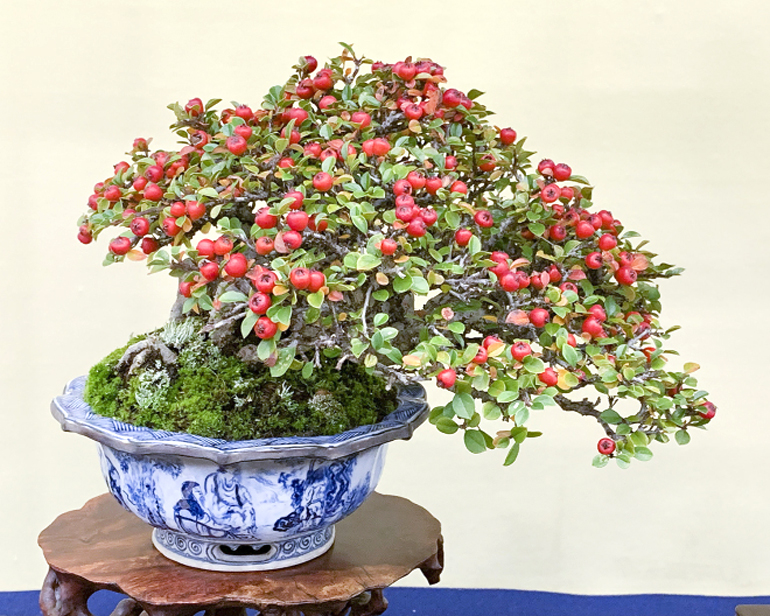
A profusion of brilliant red Cotoneaster berries
Continued from above…
Here’s part of what Bill wrote about the Exhibition… “The crowds are large in the morning each day, then they die down after lunch time. Over 10,000 visitors are expected which is a bit larger than in the past exhibitions under the leadership of Shinji Suzuki, chairman for the event. There were several foreign tour groups from Germany, Italy and other European countries. Often they go through the exhibition then on to the sales area. But occasionally I’ve seen some foreigners actually studying the bonsai and photographing.”

No caption again. Could it be an Ezo spruce?
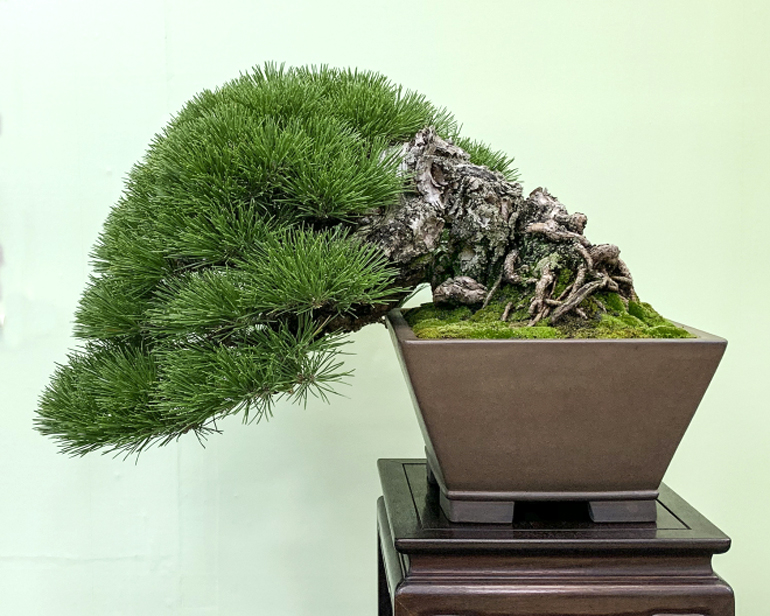
A sturdy little Japanese black pine
Hard to mistake a Camillea in bloom

The tree is a Korean hornbeam and the leaves in the scroll look a lot like Sumac
Bill and friend. I like her hair
Barbados cherry (Malpigia glabra) by Hsieh, Cheng-Hua
These three magnificent trees with their equally magnificent pots are from the 2008 Taiwan Bonsai Creators Exhibition booklet which appears on Bonsai Shari Si-Diao, Cheng, Cheng-Kung’s website. All three photo originally appeared here in April, 2011.
Ficus microcarpa by Huang,Ching-Chi.
Variety unlisted. By Tung, Wen Chi

Here's what Michael Bonsai has to say about this tree... "My Japanese Red Pine (Pinus densiflora) recently styled by Bjorn Bjorholm at Eisei-en. Quoting Bjorn 'Reminiscent of the famous #bonsai known as Kuon, this Japanese Red Pine possesses all of the desired qualities of a Meiji era (1868-1912 CE) #literati style bonsai - namely, understated movement, little to no taper, feminine branching.'" Here's a link to Michael on fb if you'd like to see more
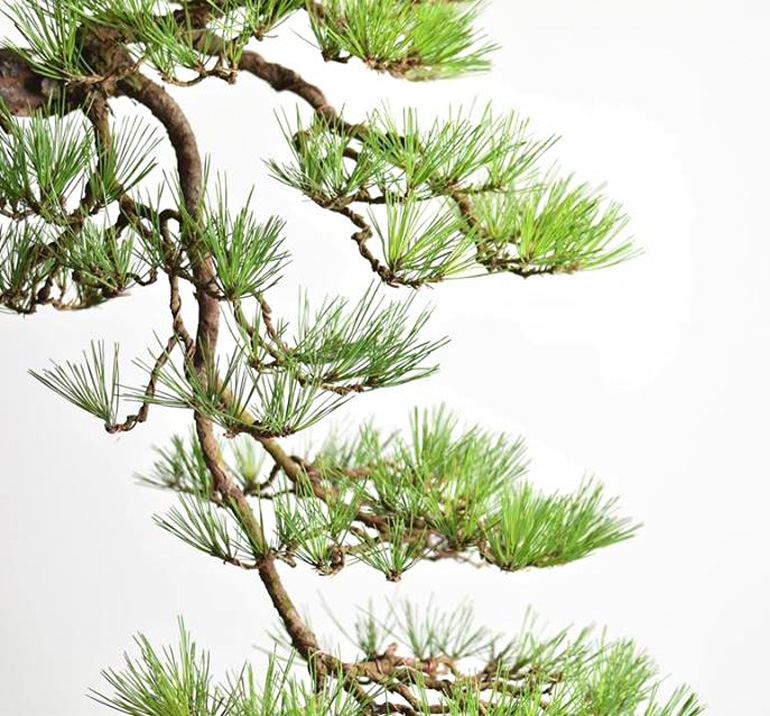
I like the relaxed open feel of the branches and foliage
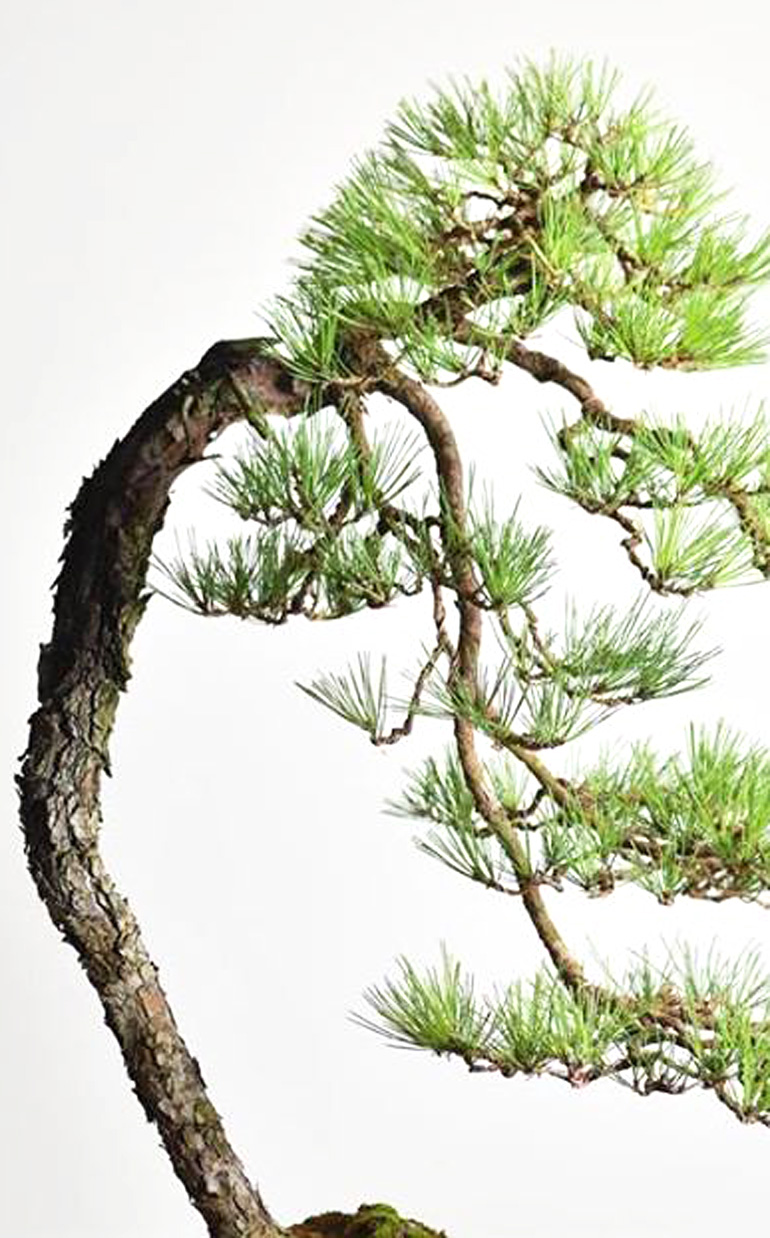
A closer look at the trunk and apex.
Before and after Shimpaku Juniper by Masahiko Kimura. No wonder they call him the Magician. The tree's height started at 15" (38cm) and ended up at 28" (71cm)
Continuing the Magician thread from the last two days. Part of this post is from our archives (2011). The rest is from today.
Bonsai are reduced in height all the time, but how many have you seen that are extended to almost twice their height? Granted, in this case about half of that increase comes from changing the planting angle, but how about the other half?
Before. Not a bad tree. I wonder how many people would think to stretch it to almost twice this height
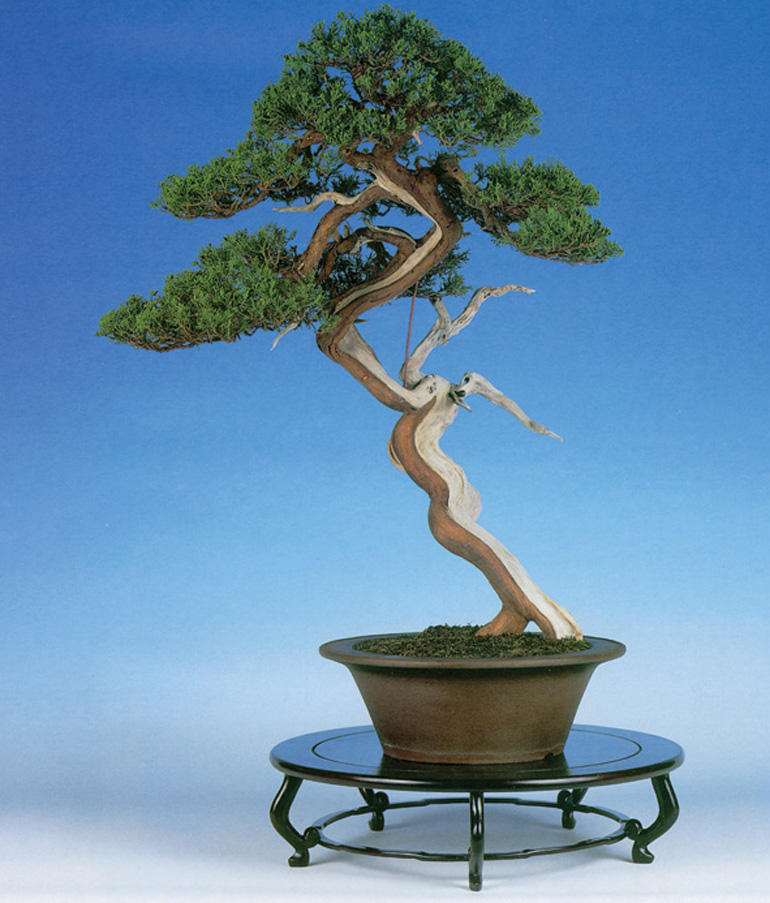
After. A magic trick. Like sleight of hand in slow motion
Rebar, bamboo sticks and a generous serving of creative genius are a big part of Kimura's bag of tricks. For a detailed photo journey showing how these trick are employed, check out The Magician, The Bonsai Art of Kimura 2.
This'll give you some idea of at least a part of the process. That's the Master, Masahiko Kimura holding the rebar.
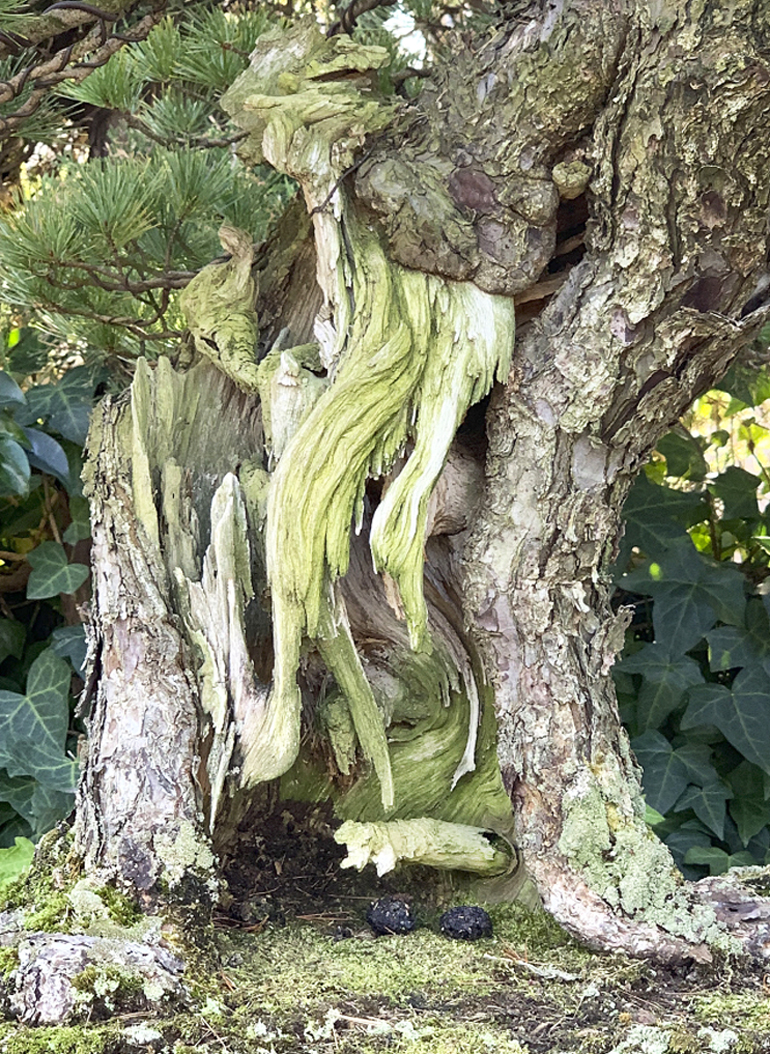
Recognize this trunk? It's a piece of a famous bonsai (see below). Bill Valavanis took this photo just a couple days ago. I cropped it just a bit for a closer look
Bill and his camera are running wild in Japan. We left him at Kimura’s nursery yesterday, so we’ll continue with a couple shots he took of a famous Kimura Japanese white pine (Pinus parviflora), and a photo of the same tree from the last century (not taken by Bill).

Bill's shot of the whole tree
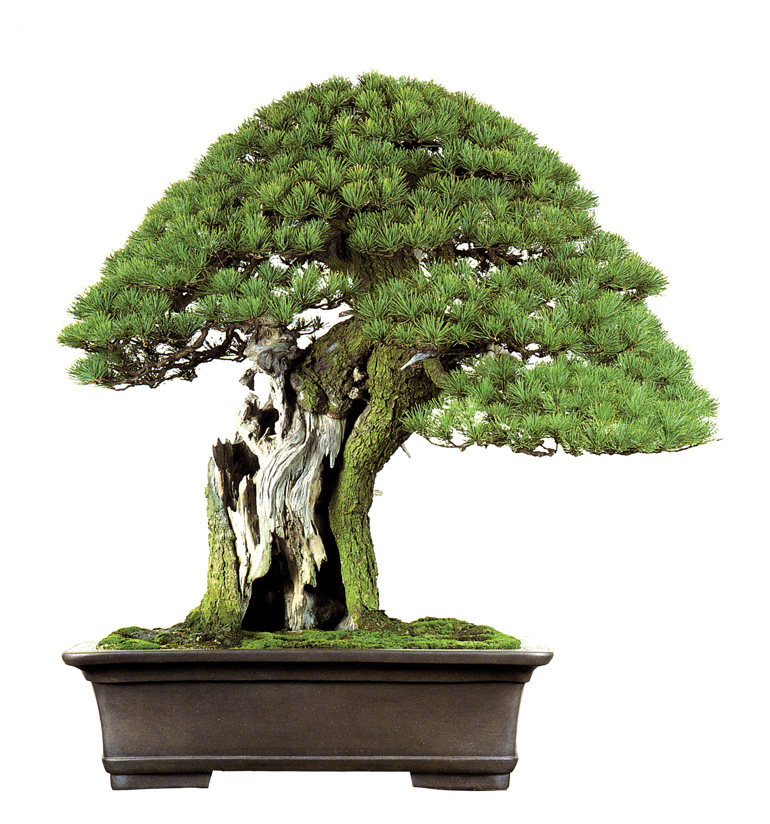
Here's a photo of the same tree right after Kimura restyled it, sometime around 1996 (it's the same photo that's on the cover of the May-June 1996 issue of Bonsai Today). At the time it was one of the most famous Japanese white pine (Pinus parviflora) bonsai in the world and it still may be. The same photo is also in the White pine gallery in our Masters’ Series Pine Book.
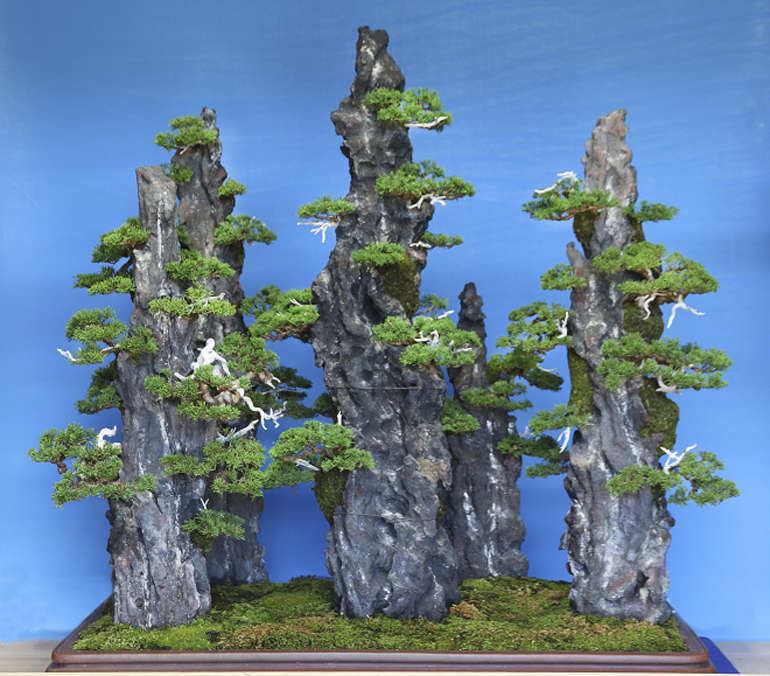
This rock forest is by the Magician, Masahiko Kimura. A master of the art of bonsai, professionally and at play
Bill Valavanis is in Japan again and we’re all the better for it. Especially if you like a steady stream of great bonsai photos. In fact, I wouldn’t be offended if you just skipped out and headed over to Bill’s blog (after you take note of our book special).
Meanwhile, if you’re still here, today it’s Kimura at play. Here’s a quote from Bill… “Our first stop was the bonsai garden of Masahiko Kimura, The Magician. I immediately noticed the increased number of tall rock plantings he created after carving and painting the stones. He is “playing” with bonsai… I’ll explain later.”
Continued below…
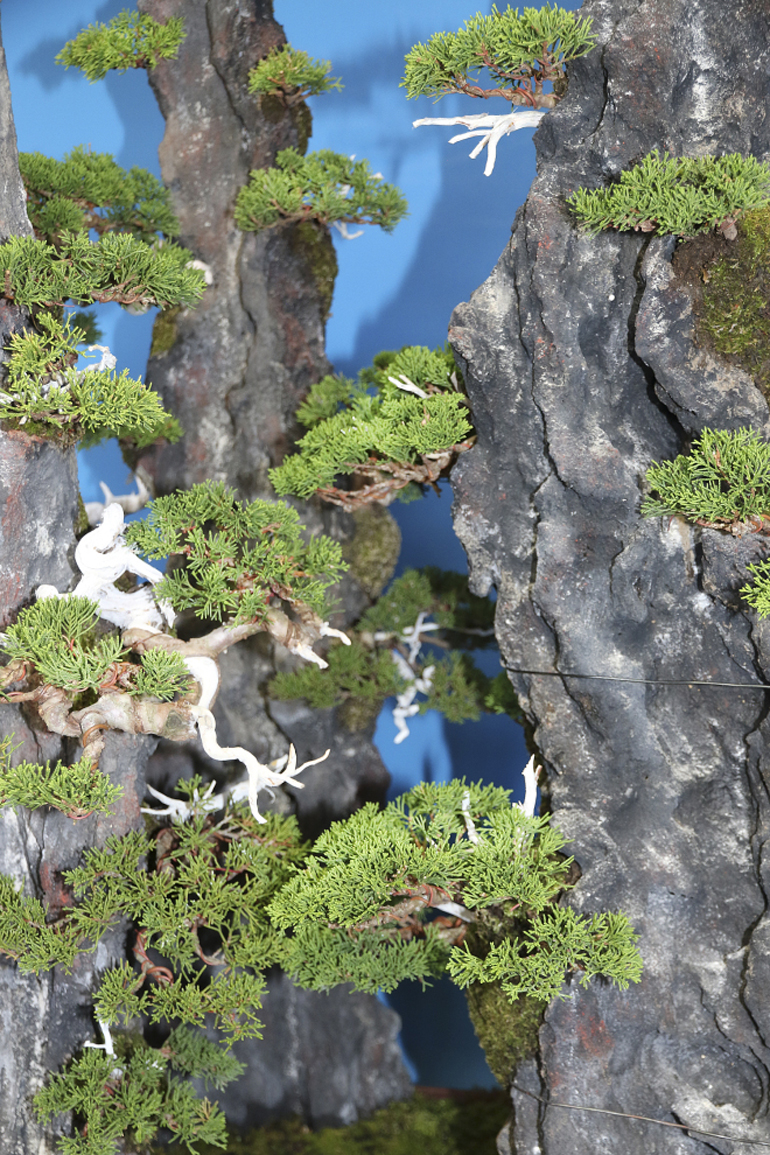
A closer look...
More on the Magician from Bill…”Through play, which he sees as the opposite side of professional work, he has been able to make use of his strong sense of inspiration in creating bonsai.”
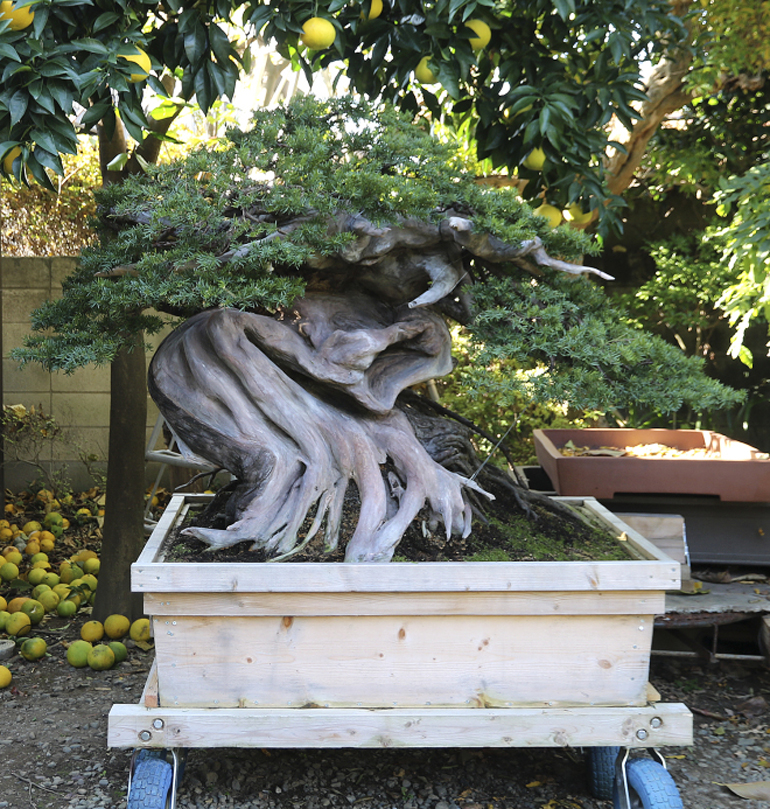
Quoting Bill again... "...a huge Japanese yew which is estimated to be 1,000 years in age"... "According to Mr. Kimura this tree is a rare world-class material" There's much more by Bill on this tree...

An island in Mr Kimura's nursery
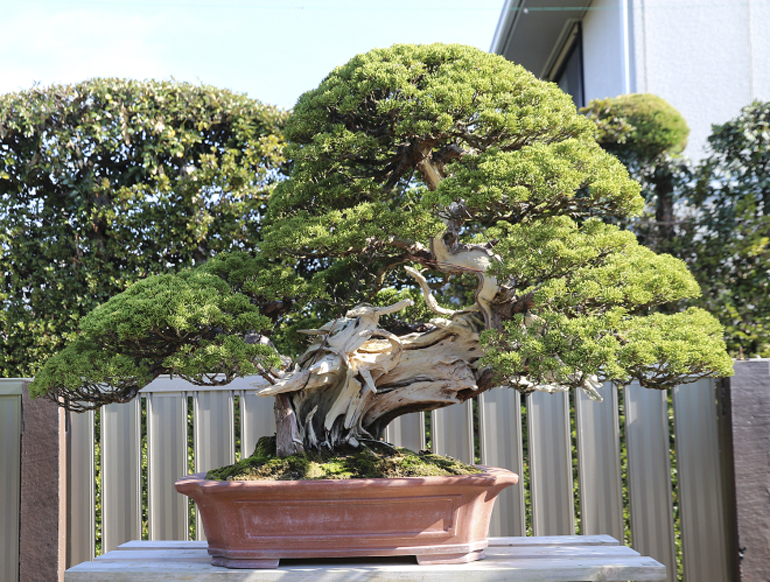
This magnificent tree is in the center of the photo above
All the photos in this post are borrowed from Bill’s blog. There are many more where these came from.
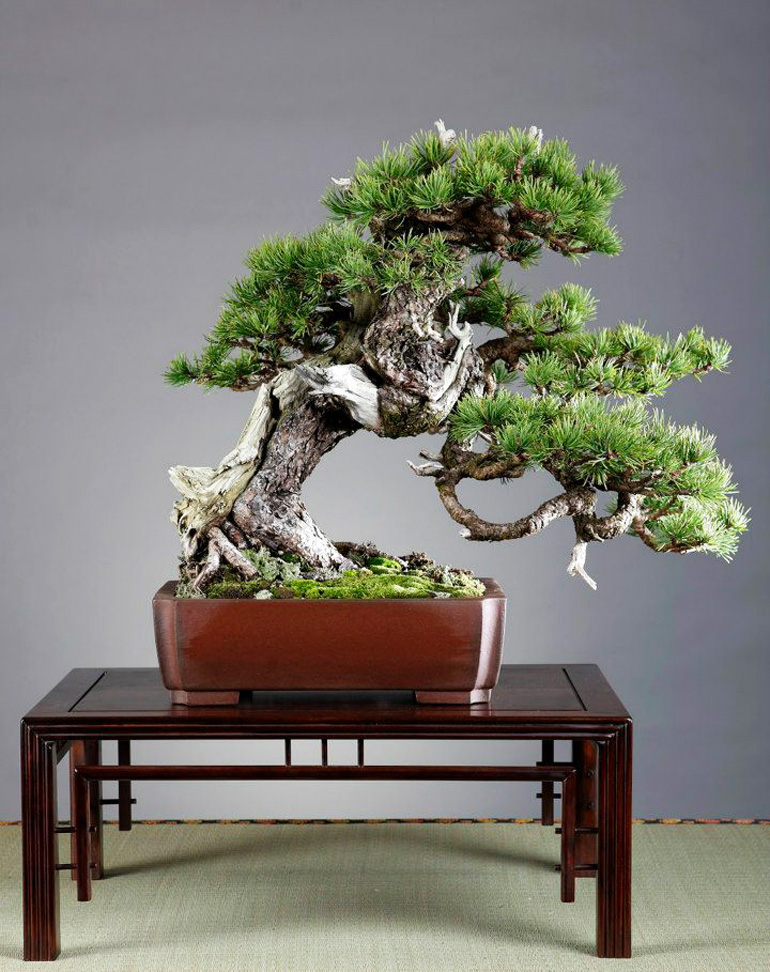
This rugged old tree starkly contrasts with the way it's presented; the professional studio photo, the quality stand and pot cleaned and oiled to perfection. As you can see, it's a pine. I won't bother to guess the variety, but here's where I found it and here's the caption... Nippon Bonsai Sakka Kyookai Europe España a SAKKA TEN 2012 - PEÑISCOLA. Fotos de estudio realizadas por Alex Espuny (Studio Photos by Alex Espuny).
I’m mesmerized by this tree’s rugged, natural look. So even though we’ve shown it before (with two more photos today), I’m going to ask you to indulge me in a second time.

A closer look. Though we know a human hand and eye has been intimately involved, the tree looks almost untouched

Even closer. Old bark and aged deadwood add heaps of character

Frosting on the cake. Only a yamadori (bonsai collected in the wild) could have this much completely unique, untamed action

This massive masterpiece is a Japanese beech (Fagus crenata)
Yesterday we featured an impressive Japanese beech and today we’ve got one that takes impressive to another level. We’ve shown it before, but the best trees are always worth another look. There was no attribution with our source so we don’t know who it belongs to, though based on the level of development and the meticulous attention to detail that it expresses, you might guess it’s from Japan.

It helps to have something familiar for scale. Though we don't know how large the human is (or who he is for that matter), you can still get a good idea of the tree's massive size
–
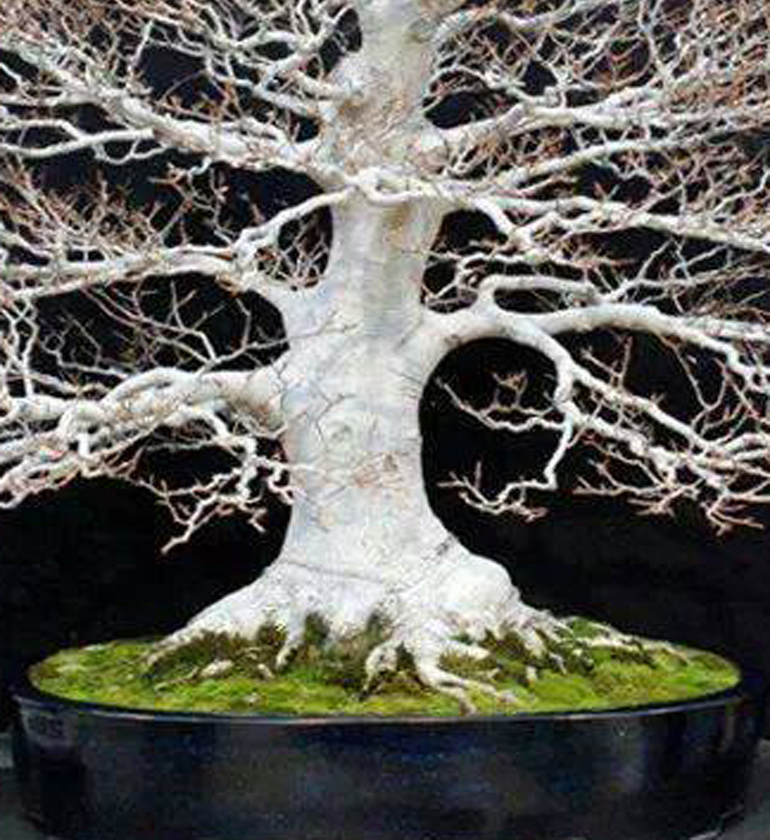
The powerful nebari augments the impression of age and stability.
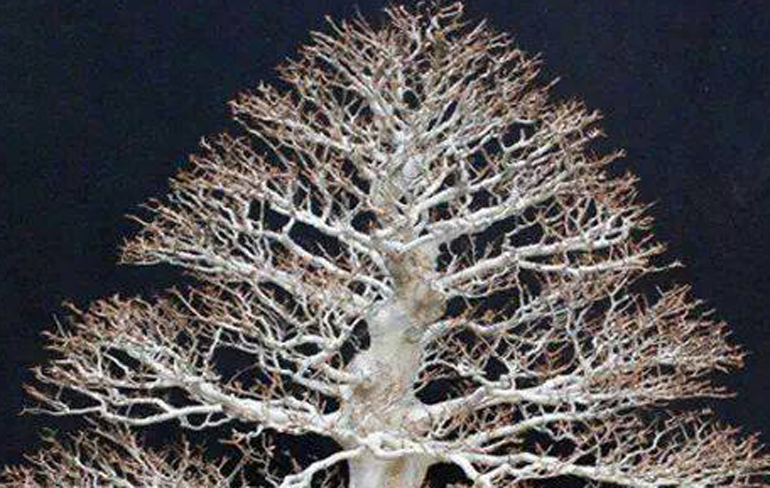
Fine branching is another indication of age. It takes time and diligence to achieve such a filigreed look

Three photos of the same tree at different times. I think it's probably the same baby too. No identification of the tree is given, but it looks a lot like a Japanese beech
I try to focus on bonsai and stay away from babies and kittens (here on Bark at least), but for some reason I couldn’t pass this one up (it helps that the tree is magnificent). The babies and the photos below were posted by Matthijs Hartjes, a Bonsai Bark first timer.
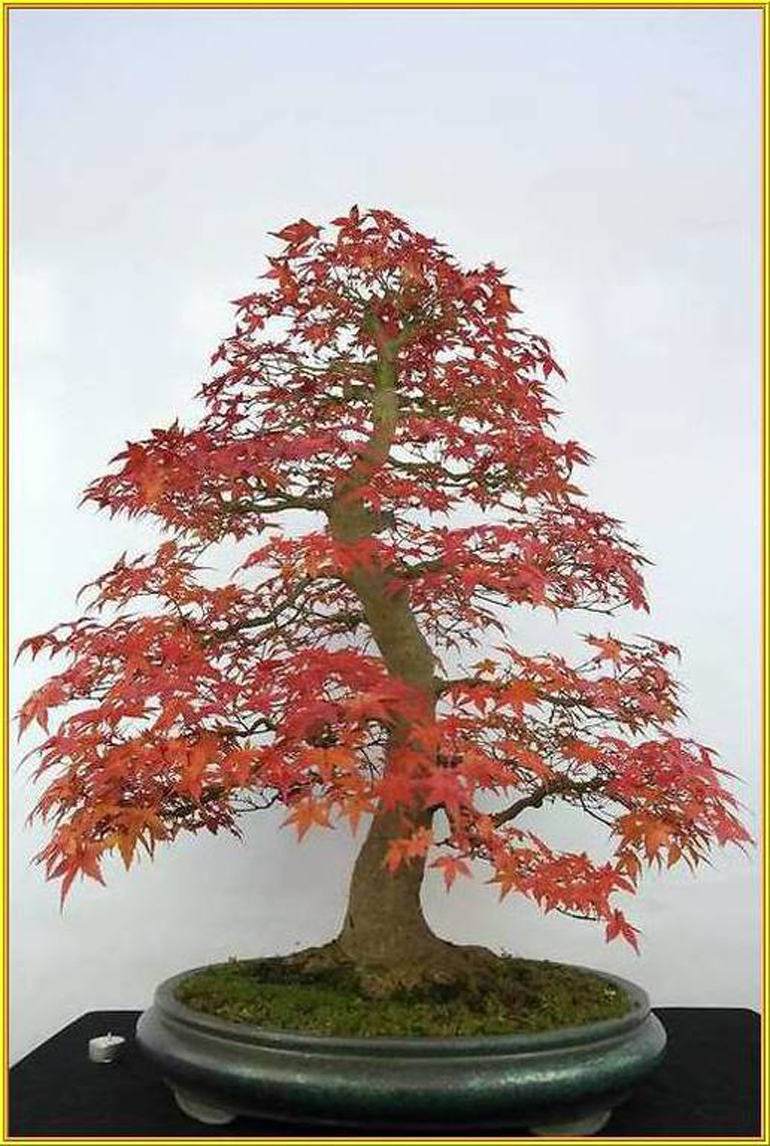
Japanese maple for sure, but no variety is given
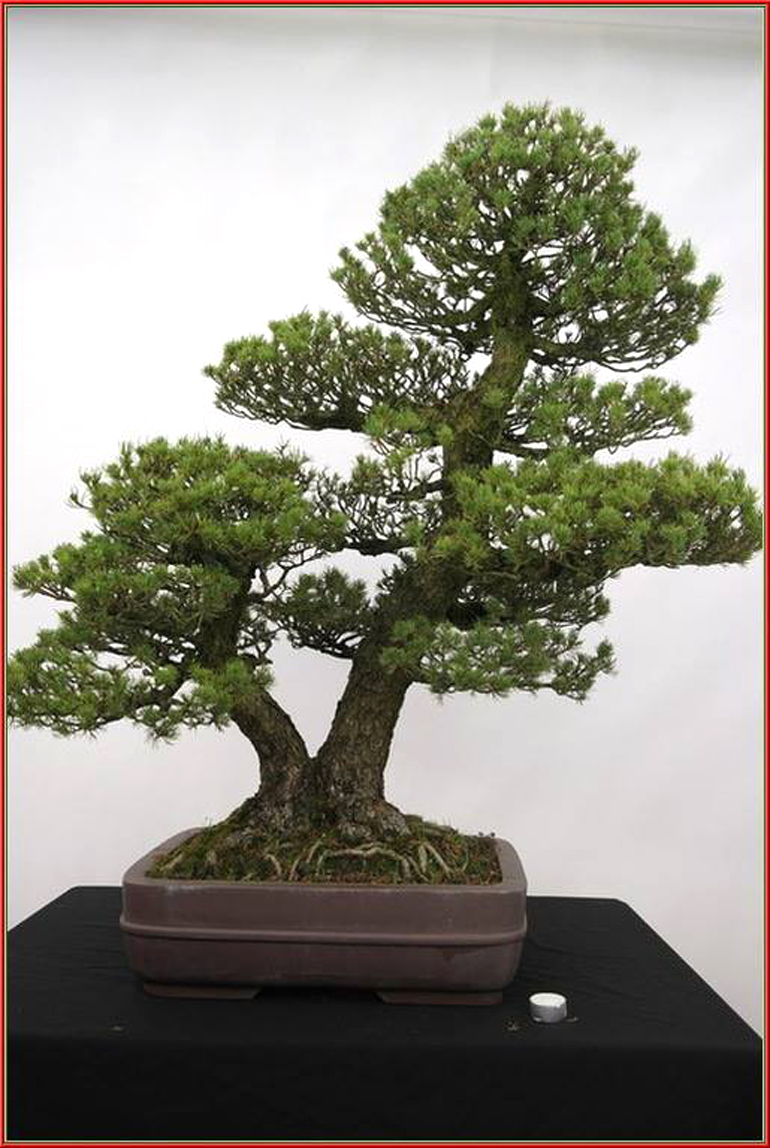
Here's a tree with a lot of potential. Again, no variety is mentioned, but it looks like it might be a Japanese white pine